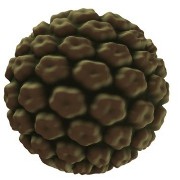 Photo: Getty Images
Photo: Getty Images
Many people are only beginning to hear about HPV (human papillomavirus) despite the fact that it has been around for decades. It wasn’t until 1984 when Professor Harald zur Hausen, a German researcher and virologist discovered that HPV was responsible for 70 percent of cervical cancers. Today 99.9 percent of all cervical cancers are attributable to HPV as well as other cancers (vaginal, vulvar, anal, penile, and oral).
HPV, as denoted by its name, is a virus which has over 150 identifiable and separate strains. Some of these strains are considered low risk, meaning that there is a smaller chance for them to go on to cause cancer. The high risk types, of which there are approximately 14 to date, can be very aggressive, especially HPV16 and HPV18 which are responsible for the 70 percent of the cervical cancers mentioned above.
Most of us have probably had HPV at some time in our lives and were unaware of it. Different strains of HPV cause the warts typically found on the hands, plantar warts on the feet and flat warts found typically on the trunk and arms. Low risk strains 6 and 11 cause genital warts. Even low risk strains can be very contagious.
Another condition which is caused by low risks strains of HPV is recurrent respiratory papillomatosis (RRP), a condition affecting the throat and lungs and which is usually transferred from mother to infant during childbirth. If the mother is known to have genital warts (the same strains which cause RRP) a Caesarean section will usually be performed to avoid any possible transfer of the virus. Respiratory papillomatosis can cause recurrent lesions requiring surgical removal and is usually diagnosed by age 4. While RRP can occur in adults the course of the condition can be much more devastating in children, requiring multiple surgeries, sometimes up to 150 over the course of the child’s lifetime.
Recently studies have shown HPV to be responsible for head/neck cancers. This is not the same as RRP as these cancers are caused by high risk HPV strains while RRP is caused by low risk HPV strains. These cancers are more prominent in men and a significant number have no prior history of smoking or alcohol intake, the two most common reasons for these types of cancer before the HPV connection was discovered.
The bottom line is that HPV is a widespread set of viruses containing both low risk and high risk strains responsible for a whole host of conditions from minor warts on the hands to invasive squamous cell cancer. Talk with your doctor about the HPV vaccine which protects against two low risk and two high risk strains of HPV known to cause the most issues.
http://emedicine.medscape.com/article/865758-overview
http://www.thehpvtest.com/about-hpv/high-and-low-risk-hpv-types/?LanguageCheck=1
http://www.cdc.gov/std/hpv/common-downloads.htm
http://www.cancer.gov/cancertopics/factsheet/Risk/HPV
Reviewed June 1, 2011
Edited by Alison Stanton





Add a CommentComments
There are no comments yet. Be the first one and get the conversation started!